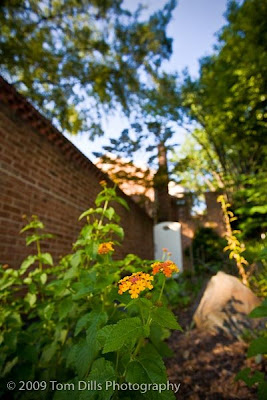
I’ve been spending a lot of time lately educating myself about the history of photography. It’s an interesting exercise, and anyone the least bit interested in the field would do well to take some time to learn more. In addition to Jeff Curto’s History of Photography podcast, The Online Photographer and other websites, there are a number of books available on the subject from your local library.
One of the things I have found fascinating, particularly in the history of landscape photography, is that it hasn’t always been a requirement to shoot at the smallest possible aperture and have everything in focus. Ansel Adams, Edward Weston, Imogen Cunningham and the rest of the f/64 gang changed the trend dramatically with their ‘everything razor-sharp and in focus’ images. I love that work and it has influenced me greatly, but prior to that, and to a lesser extent after, photographers like Alfred Stieglitz, Edward Steichen and Paul Strand often used selective focus and shallow depth of field to achieve remarkable results. I don’t pretend to be any of those people, but studying the various methods used throughout photographic history can give us a broader base upon which to build our own vision.
Today we can put a Lensbaby or zone plate on our digital camera and make things out of focus on purpose. And if we’d rather spend time on the computer and don’t want to mess with gear, we can even buy software that will mimic the out-of-focus qualities of lenses we don’t have! But just like it seems counterintuitive to buy software to make our digital images look like film (really!) I generally don’t like messing around with more gear. It just leaves me confused and then I stop seeing things the way I’ve learned to see them. Recently I started thinking “gee, what about if I just use a larger aperture and deliberately make things out of focus? I wonder how that would turn out?”
It is easy to overuse any creative tool, so you don’t want to make every image you take blurry or out of focus any more than you want to make absolutely everything sharp and in focus, but these are tools in our tool box that we can use when the scene or the subject warrants it. We all strive to achieve a personal style or “look” to our photographs, but that doesn’t mean they all look the same. It means that regardless of the style or technique used someone can tell it is your photograph. I believe strongly that you create a “look” by what you feel in your heart and see in the viewfinder, not by processing all your photos with the same software package or using some special lens. I want my images to look the way they do because that’s the way I wanted them to look when I tripped the shutter, not because I know how to run actions in Photoshop and do the same thing to every photo I take.
Anyway, I’ve found myself exploring this shallow depth of focus thing and finding that I like it a lot. It doesn’t always work, but there are times when it is better to suggest what is in a background (or foreground) than actually showing it. I can only imagine the comments at a photo critique session – “gee, it looks kind of soft” or “ those out-of-focus highlights are really distracting.” Well, maybe that’s the point! Don’t just assume that whatever is in focus is the subject! The subject might be the highlights!
Another recent trend, one I’ve tried and like a lot, is using camera movement to blur a scene and distill the elements into patterns of form, textures and color. I don’t do it all the time, but there are some scenes that really lend themselves to it. I have had a great deal of success with this at the beach, but finding suitable subjects on land can be a bit more tricky, at least for me. It’s really fun to take a “traditional” shot with the camera on the tripod, then pull it off the tripod and take a shot of the same scene using a different technique. Explore! You just might find something you like!
One of my grandmother’s sayings was something like “so what does that have to do with the price of prunes?” That was her way of saying “Tom, get to the point!” The point is, we would all do well to study our history, be inspired by the work of the masters – all of them – find things we like, be open to things we haven’t tried or maybe even make us a little uncomfortable, and have fun with this life we call being a photographer.




